A once-modest 1950s church hall beside Holy Trinity Tauranga has been transformed into a state-of-the-art conference and events facility, complete with a sacred new chapel honouring a century of parish history.
Now known as the Jordan Centre, the refurbished space on Devonport Rd brings together legacy, faith, and modern function – more than 20 years after a devastating fire reshaped the heart of the parish.
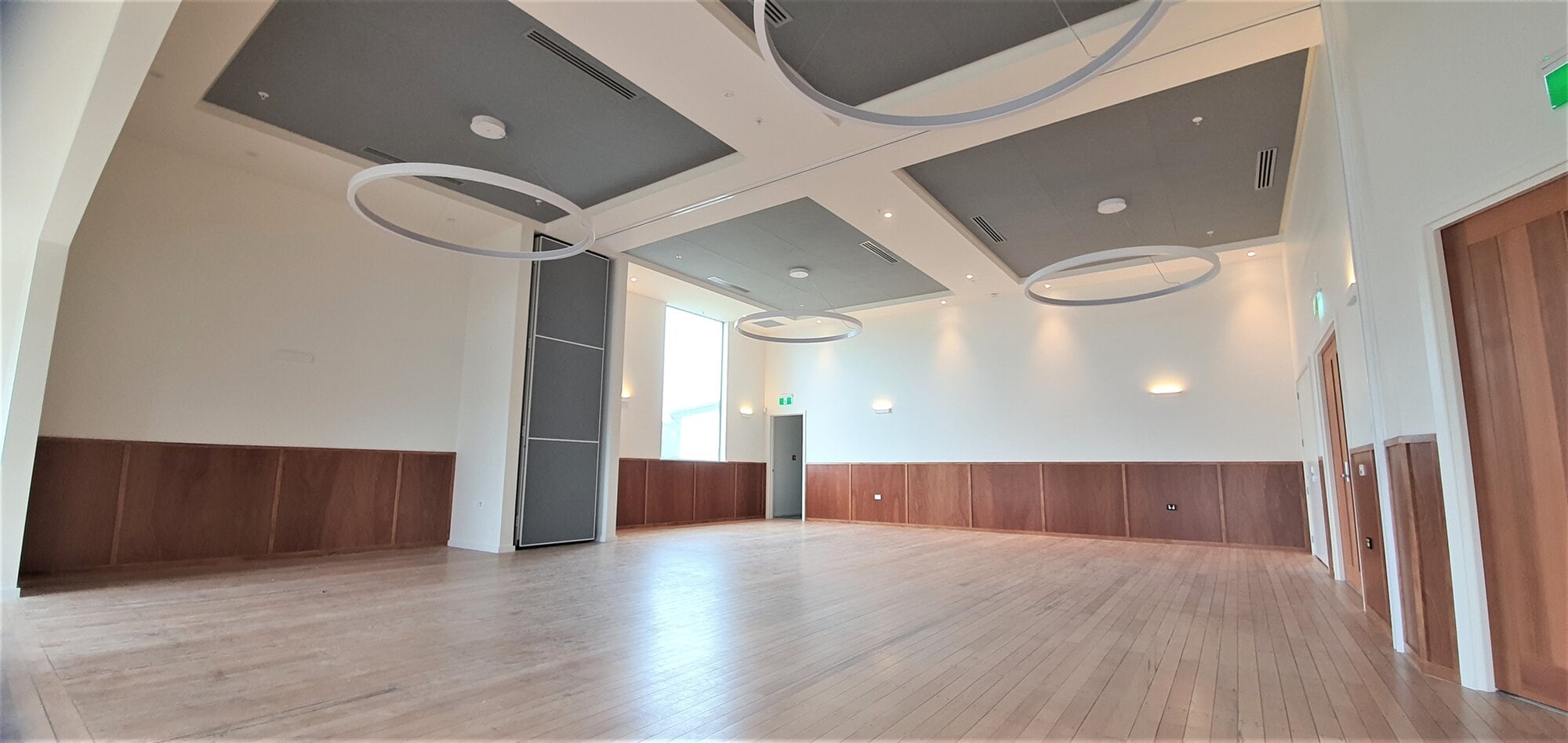
The refurbished hall in the Jordan Centre can be divided into two separate meeting rooms. Photo / Supplied.
Originally serving as a temporary place of worship after the iconic Holy Trinity Church burned down in an arson attack in 1999, the old hall was long overdue for an upgrade, said Parish Pastor Donald Carter.
“We got to the point where I said to the vestry: ‘If the roof comes off this old hall and kills somebody, you’re liable’. ‘We better do something’ was the response.”
Bold decision
Plans to demolish and rebuild it hadn’t materialised due to financial constraints.
However, in 2020 the bold decision was made: to preserve the hall and transform it into a modern facility serving the church and the wider Tauranga community.
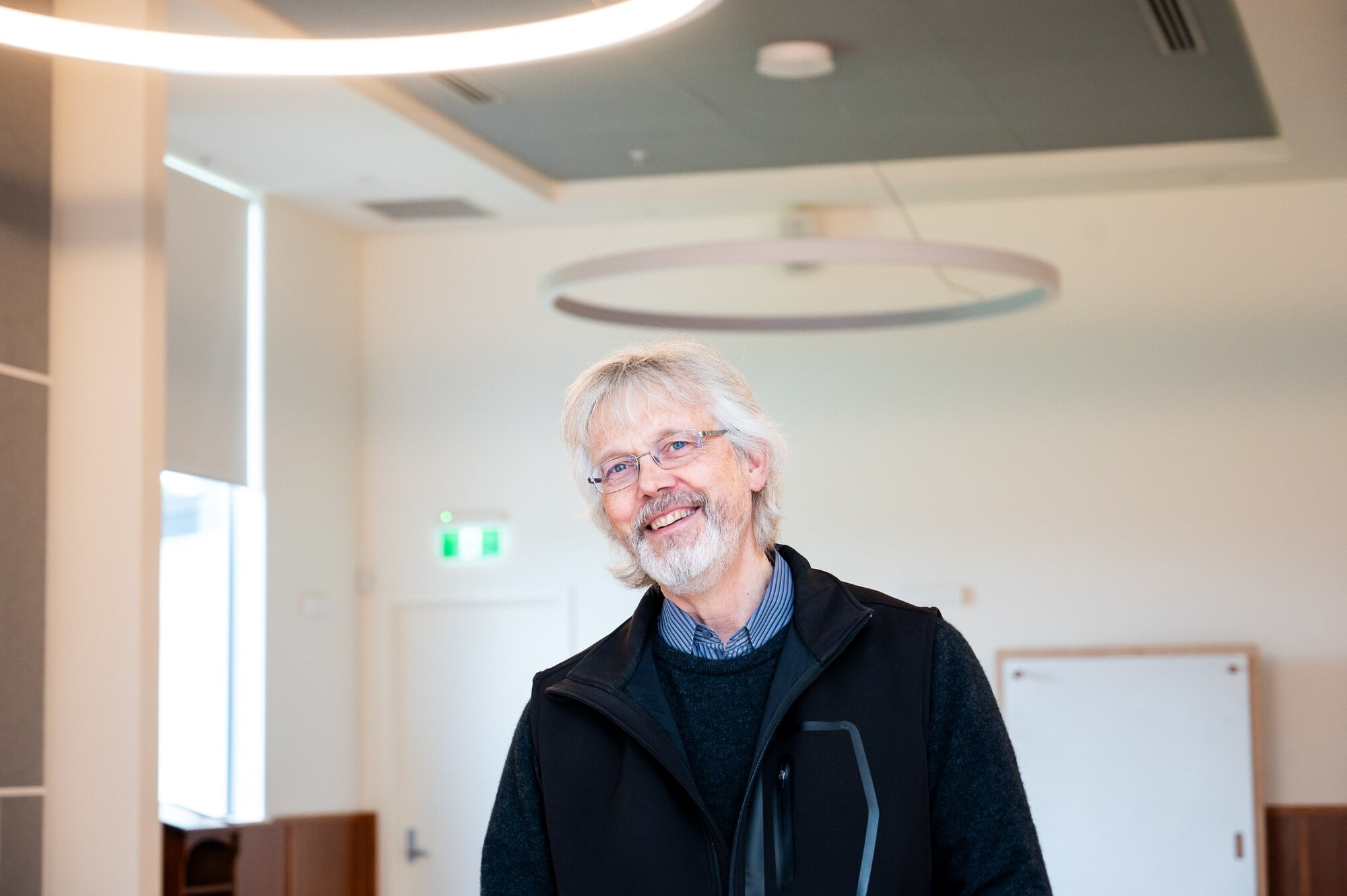
Holy Trinity Tauranga Parish Pastor Donald Carter in the Jordan Centre hall. Photo / Brydie Thompson
Designed by Chris Moore of Jigsaw Architects and built by Arrowsmith Builders, the Jordan Centre now features a range of flexible spaces, including meeting rooms, breakout spaces, a professional kitchen, and high-capacity Wi-Fi.
The centre can host everything from business conferences to community gatherings, and is equipped with advanced audio-visual systems, air conditioning, and accessible amenities.
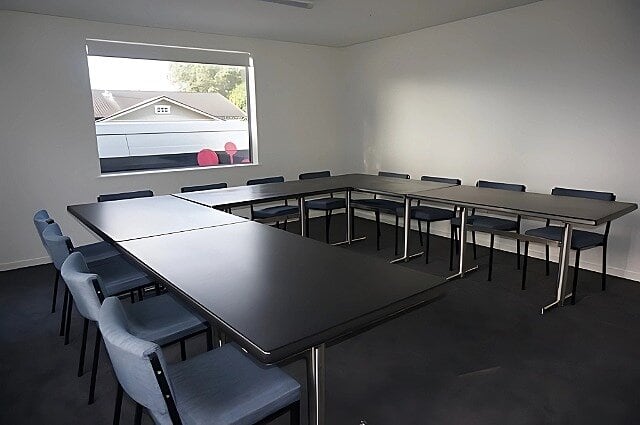
One of the smaller breakout rooms in the Jordan Centre. Photo / Supplied
“We basically gutted the place, keeping the floor, and rebuilt, with breakout rooms and a mechanical door that divides the space into two. Essentially, creating five breakout spaces. We can seat 800 people in the auditorium, and 160 in the Jordan Centre.”
The chapel
A key feature of the redevelopment is the Phyllis Carmichael Chapel, a quiet, reflective space at the western end of the building, named after a long-time parishioner whose generous legacy helped fund the project, said Carter.
The chapel seats 70 and hosts smaller worship gatherings, weddings, funerals and weekly services.
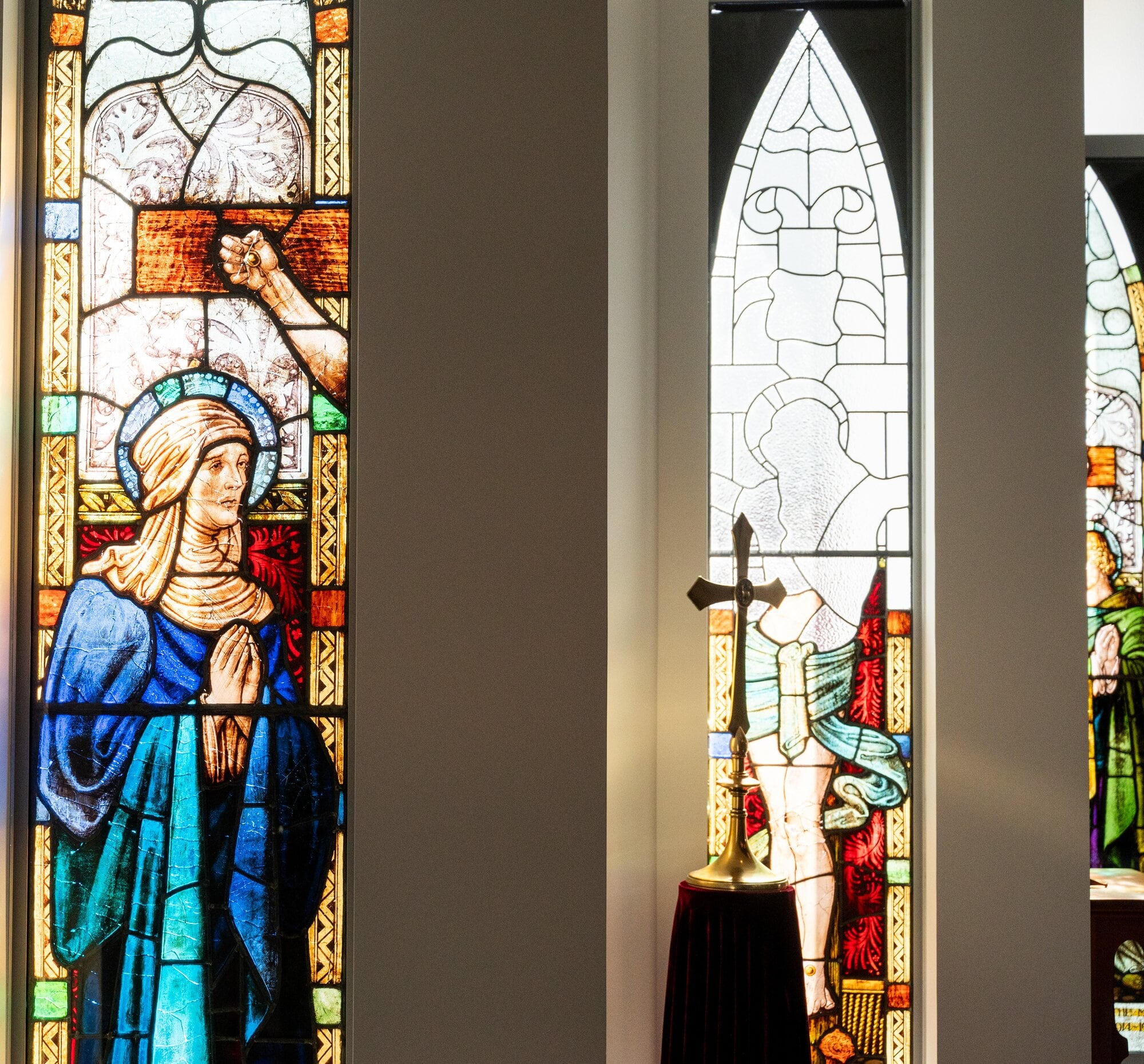
The three stained glass windows from the old chapel were restored after the fire and placed in the new Phyllis Carmichael Chapel in the Jordan Centre. Photo / Brydie Thompson
Its most striking features are three restored stained-glass windows salvaged from the original 1875 church, serving as a significant memorial to soldiers lost in World War I, Carter said.
“They were commissioned by the widow of a soldier who died at Gallipoli and made in England in 1923.”
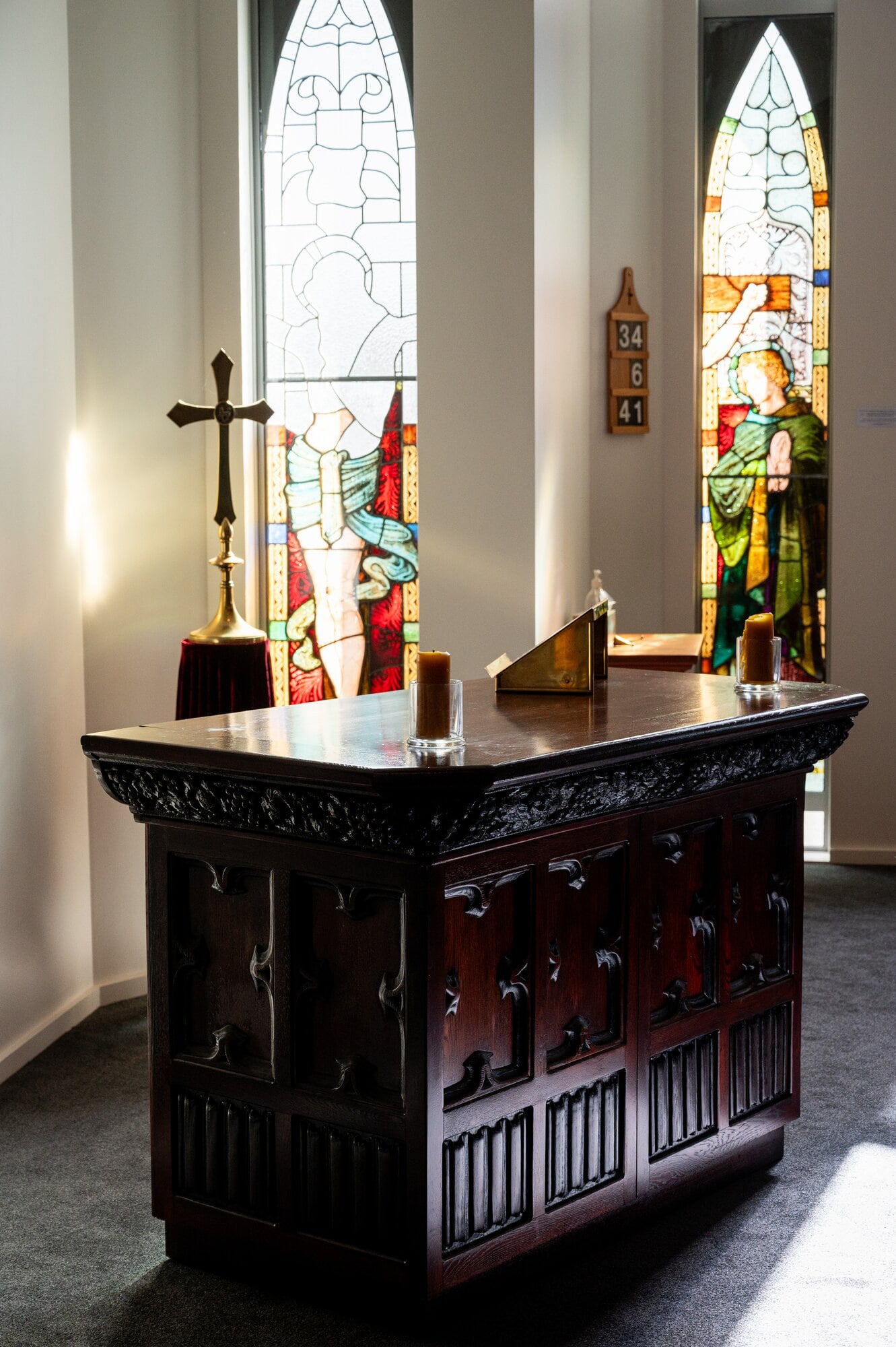
The panels from the original pulpit were damaged in the fire, but David Moorhouse took them and rebuilt them as the basis for the altar in the chapel. Photo / Brydie Thompson
Originally thought destroyed in the fire, the windows were rediscovered in 2020 and painstakingly restored by local craftsman Steve Sinclair from Leadlight Expressions during the Covid lockdowns.
They depict the crucifixion of Christ flanked by Mary and John, with Carter saying it was a phenomenal moment when they realised the windows would miraculously fit the exact space the architect had allowed.
“We found them after the chapel had been designed, if we’d known about them before, we probably would have built the chapel around them. But then they would have become the centre of worship and not Christ.”
“They’re part of the beauty, the taonga, they’re a part of the story but they’re not it. Christ is still the reason why we come in here.”
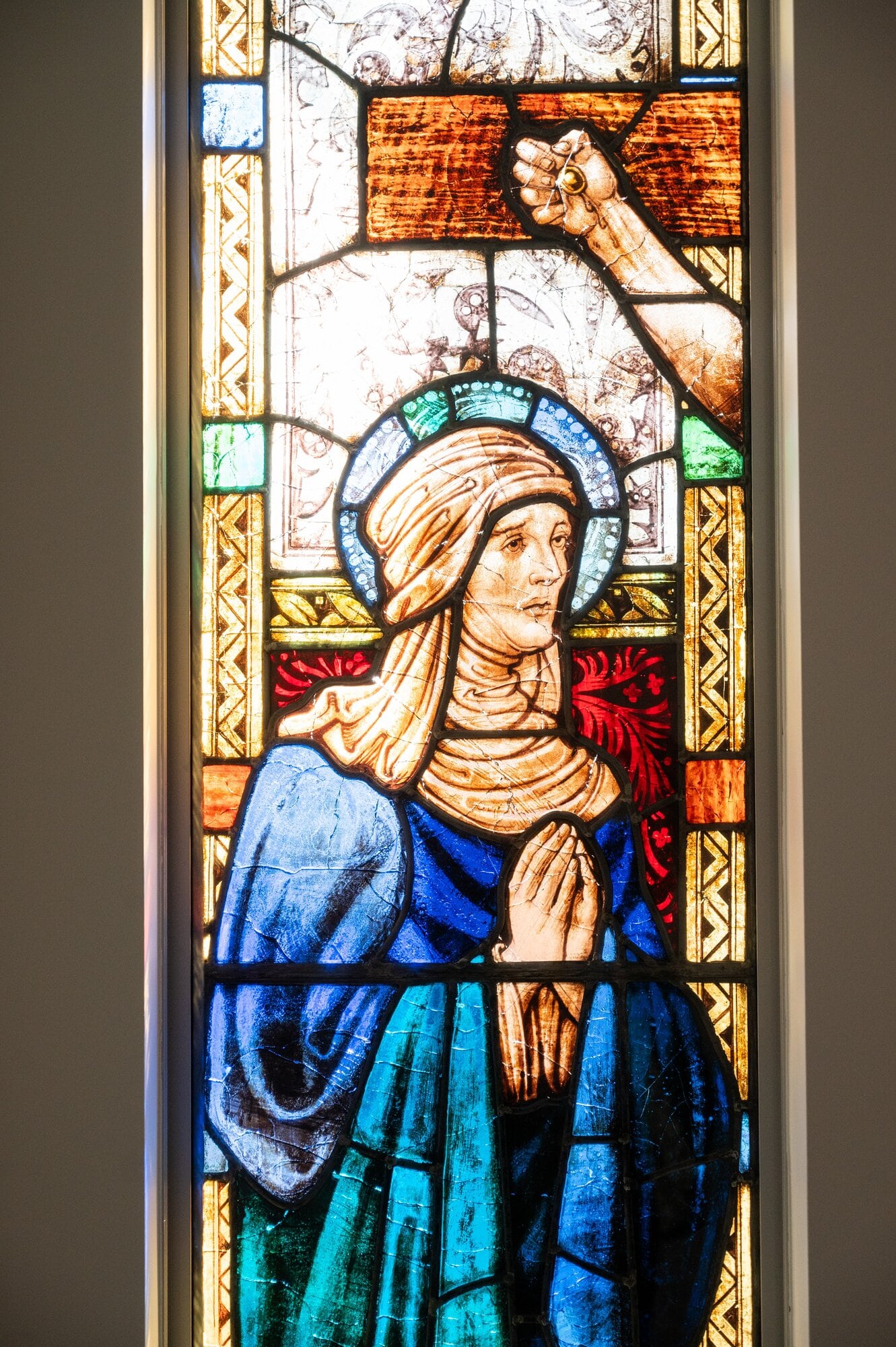
The restored Mary window in the Phyllis Carmichael Chapel in the Jordan Centre. Photo / Brydie Thompson.
Centre namesake
The Jordan Centre is named in honour of Rev Canon Charles Jordan, the church’s first vicar and a five-time Mayor of Tauranga, reflecting both the ecclesiastical and civic roots of the church in the city.
The transformation includes a large multi-use hall that can seat up to 190 people and divide into two soundproofed sections for versatility, said Carter.
The original kitchen and stage were removed to make way for modern amenities and natural light now floods in through new street-facing windows – a conscious design choice to connect the space with the community, Carter said. “We wanted the community to be able to see in, and for us to see out.”
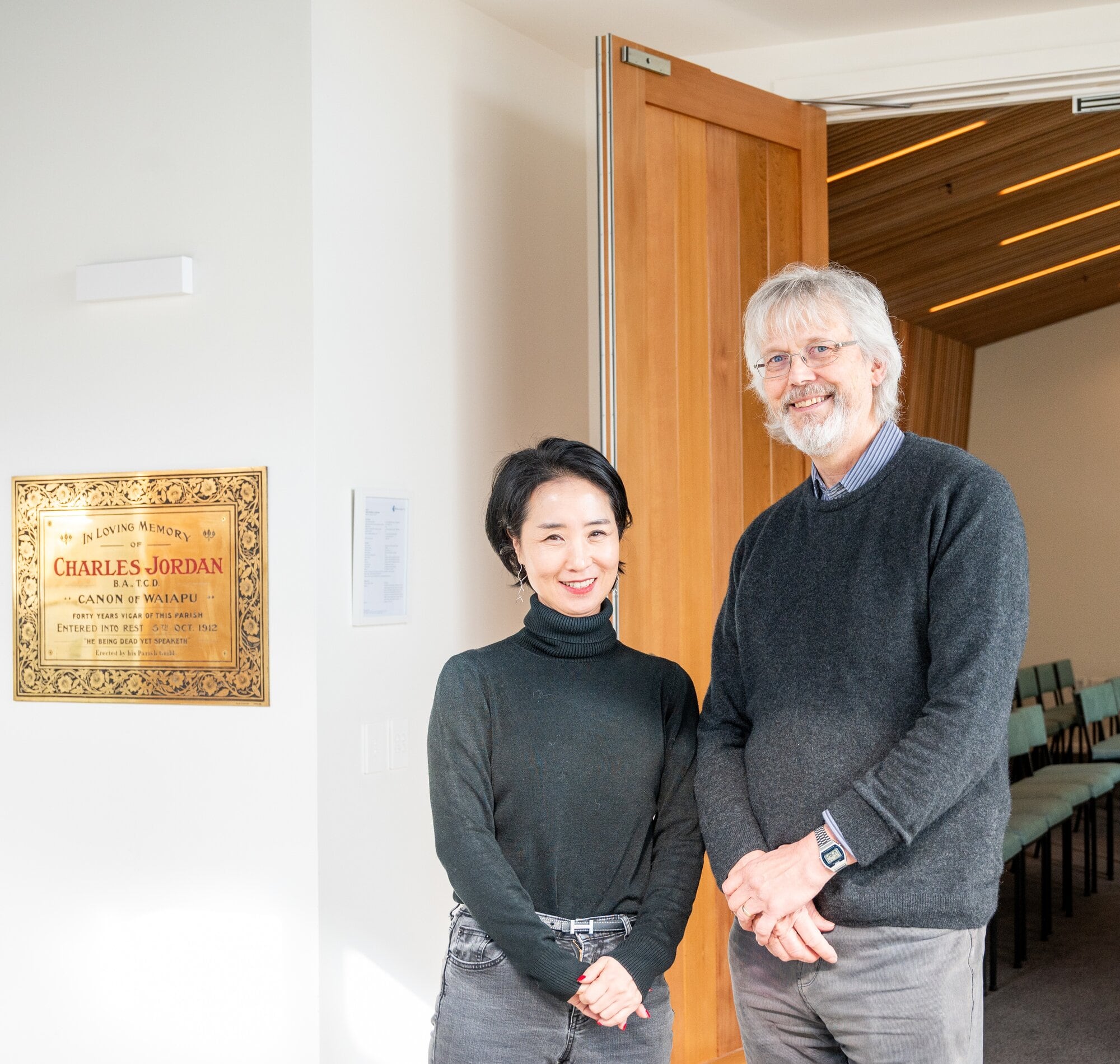
Holy Trinity Tauranga facility manager Jackie Kim and Parish Pastor Donald Carter in the foyer of the Jordan Centre. Photo / Brydie Thompson
Already in high demand, the Jordan Centre has been used by Tauranga City Council, Priority One, and other local organisations for meetings, conferences, and events.
Facility manager Jackie Kim oversees bookings and catering. Carter said “venue hire is going crackerjacks”.
Incredibly meaningful
Beyond its physical upgrades, the Jordan Centre serves as a living memory of the church’s resilience. The new chapel also houses refurbished original furnishings, including a restored bishop’s chair and altar made from scorched kauri salvaged from the fire.
The space continues to honour the church’s military heritage as well, including its connection to the Hauraki Regiment. Their regimental colours are laid up at the church, and annual parades are held, spilling over from the chapel into the centre’s foyer.
“There’s an old hymn that we sang with the Hauraki’s: ‘Oh God, our help in ages past, our hope for years to come, our shelter from the stormy blast (our fire) and our eternal home’. And it was like God said: ‘I was there when the old place burned down, and I will be there when the chapel’s been built. I haven’t left’. It’s incredibly meaningful for us,” Carter said.
Venue Details:
For more information or to book the venue, visit www.httvenues.nz

.jpg)